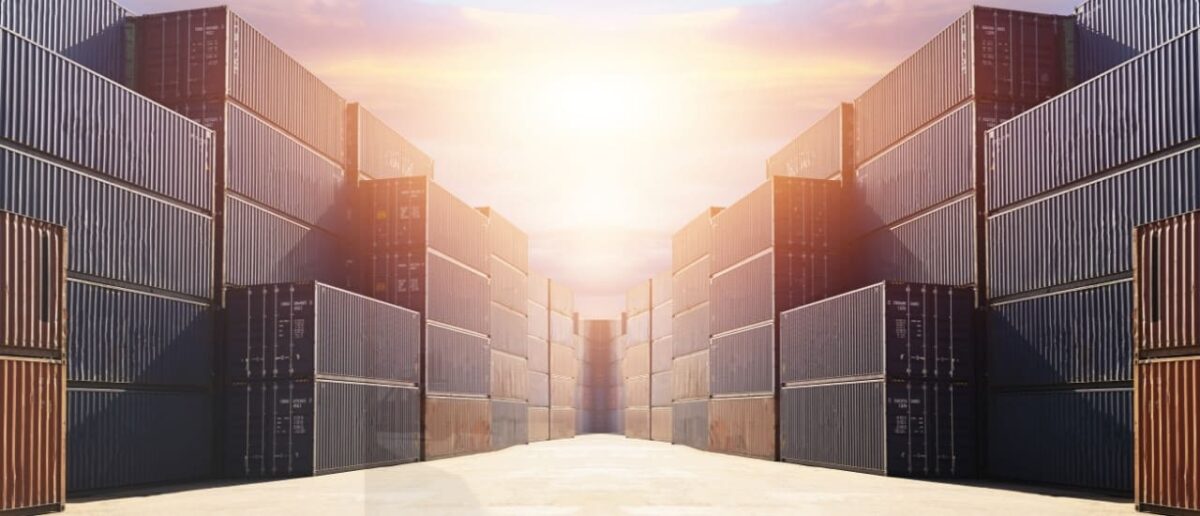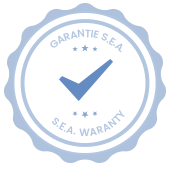A container is used to transport goods from one port to another, by container ships or by various successive modes of transport. This metal container has the shape of a block. The dimensions of a container vary depending on its type: 20-foot or 40-foot container, dry or high cube container (etc.). The height, width and length are then not the same depending on the sea container used. The capacity or payload also varies and can be expressed in cubic metres to estimate the volume, or in kg to estimate the maximum weight.
Marine containers: capacities and dimensions
“General Purpose” containers in marine transportation are of the “closed ventilated” type. These are closed sea containers with a roof and rigid walls. They are equipped with doors at one end, lead-on when put on ship, and are designed for the transport of vehicles and goods of all kinds. There are basically two types of containers used in shipping: the 20-foot container and the 40-foot container.
Which storage container is most suitable for my company?
The first question to ask is the choice of container according to your line of business. It is indeed your storage needs that will determine the right type of container. There are three main categories of containers:
Standard containers: for conventional storage needs of non-perishable foodstuffs, available in 8 different sizes.
Refrigerated containers: for the creation of mobile cold rooms.
Specific containers: for special needs, processed on a case-by-case basis.
The Internet is full of information directly or indirectly related to the use of sea containers. If you are a beginner and the jargon of the container is still foreign to you, we advise you to read the tool sheet of the container. This tool will be your first support to simplify and accompany you in your searches. The sheet brings together a table of sizes, a glossary and a summary of the specificities of the container categories mentioned above.
How do I know which storage container model to choose?
Now, you know which category fits you, but which model to choose? Three answers to the three questions to ask yourself:
1. How long does a container last?
As a first step, when choosing a storage container, it is important to consider the “storage time” factor.
If your life is rather short, that is to say less than two years, we advise you to focus on a model of used marine container. The used container gives you optimal storage quality, with a reduced purchase cost. In addition, our used marine containers have a real resale value in the second-hand market.
If the duration is longer than two years, it will be more convenient to direct you to a new container or first trip. This container will have a longer life and the warranty that is attached will also be more extensive. This is a long-term investment that can save you money in the long term.
2. What type of products should you store?
Then, note that the choice of your storage container will be determined according to the type of products you want to store. You should know that you can buy a new container on your first trip or a used container. When buying a used container, you will not necessarily have the opportunity to know its history, the products previously stored or to choose the color or other aesthetic effects (except on request).
The different types of containers
Maritime container transport has contributed to the development of new services in the world: in order to satisfy the needs and the demand, to adapt to any environment, the construction of certain types of containers has thus been necessary.
The standard dry container
The dry container is the most used of the sea containers, as it is suitable for the majority of the transport of so-called dry goods, such as wooden or cardboard crates, pallets, barrels or barrels, etc.
The open top container with sunroof
The open top container is characterized by its sunroof. This container was created to allow to load a bulky object that cannot be disassembled, or heavy products from above using cranes. It’s much easier to use.
The reefer container
The reefer container is designed to be able to control the temperature in order to preserve the quality of the cargo during transport.
This type of container is usually equipped with an electric motor to regulate the temperature of the indoor atmosphere.
A refrigerated or refrigerated container is used in particular to maintain the cold chain for food products, frozen products, and perishable goods transiting through hot countries.
The open side container
The open side container is characterized by a possible lateral opening over its entire length: it is thus possible to load objects or goods whose length is impressive per forklift.
This way of loading a container can also save time.
The tank container
The tank container is used to transport gases, liquids or powdered products.
Some goods may be food, others dangerous such as gasoline and certain gaseous products.
For safety reasons, ISO 1496 defines the conditions and specifications of the tank container. Companies must respect them to avoid any risk of explosion resulting in financial and human losses.
In particular, the tank must be placed in a mobile frame to facilitate loading and unloading. The assembly should be cleaned regularly.
The flat rack container
The flat rack container is characterized by folding ends on the floor. The base is used to install the load, the side walls (rigid or not) are used to secure the load by means of curtains or docking pits.
The flat rack container is used, for example, for the transport of vehicles: it is very useful for transporting any bulky load such as a boat, a tractor, or any load outside dimensions (width or height).
The floor of a flat rack container is designed to transport heavy loads safely.
The container is foldable for easy storage or storage: the walls fold on the floor.
This difference in capacity translates into a reduction in distribution costs and a gain in space, two factors of competitiveness in maritime transport.
Ultimately, the choice of your container storage is subject to several factors, whatever your project.


